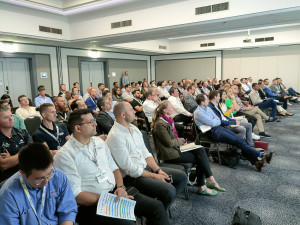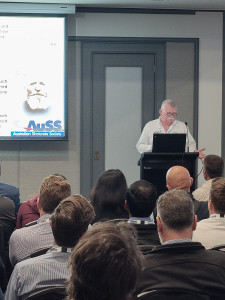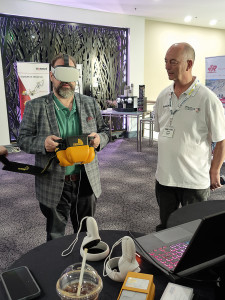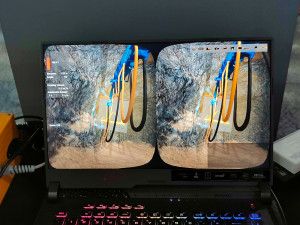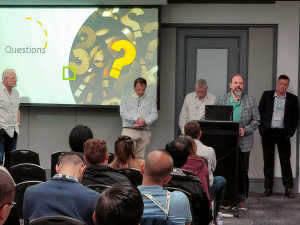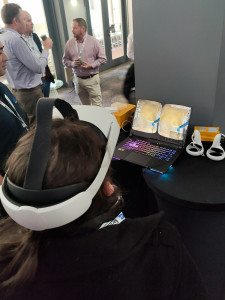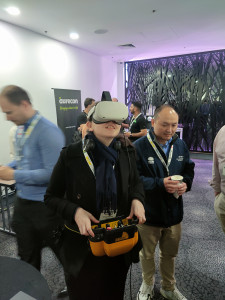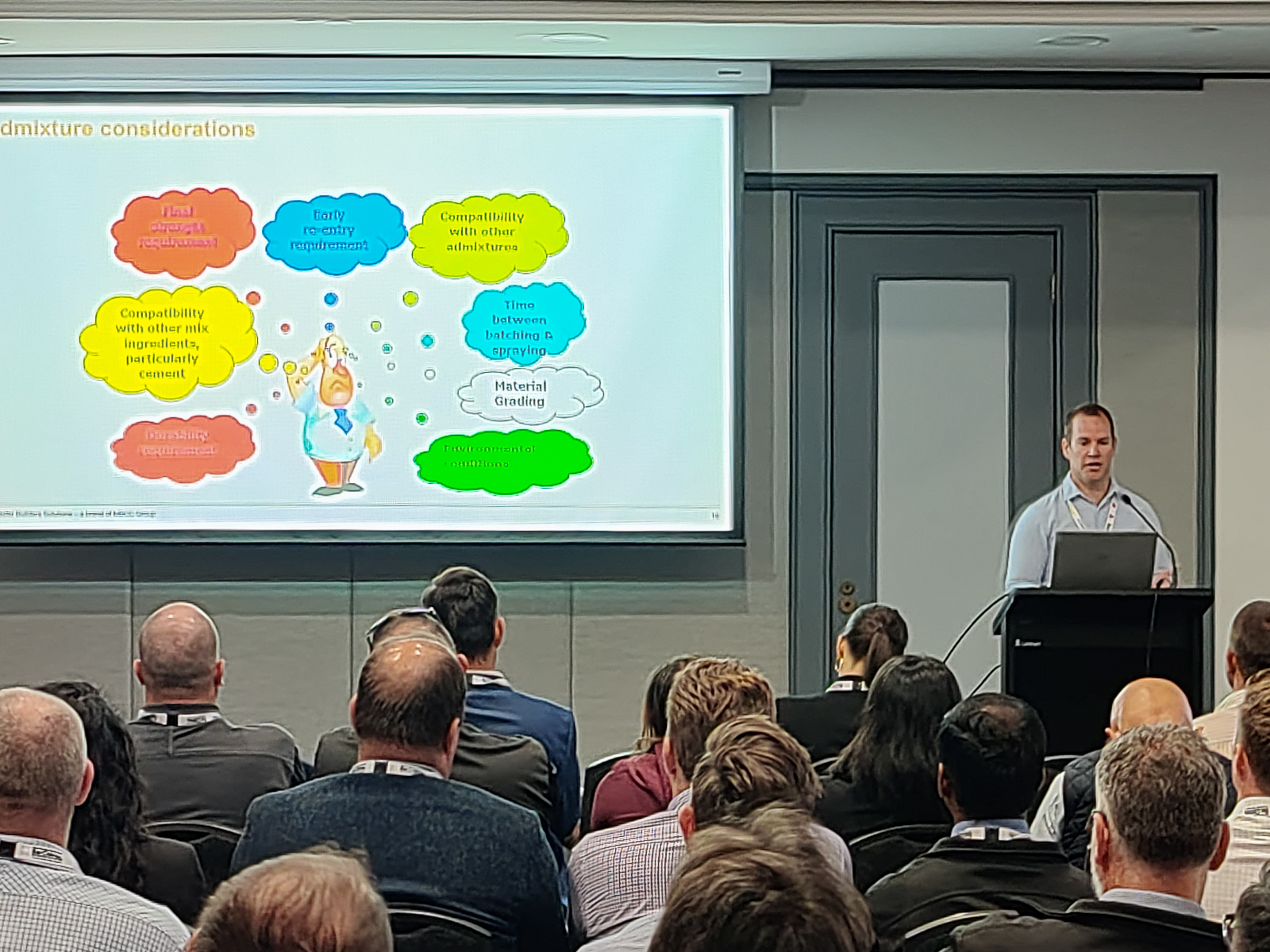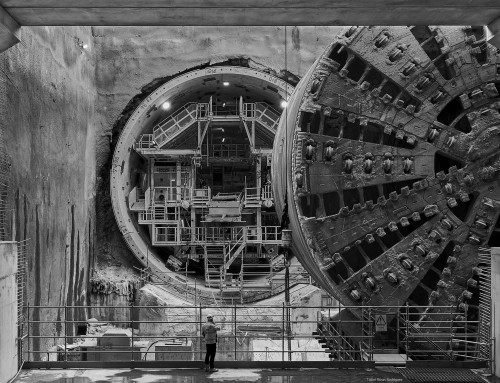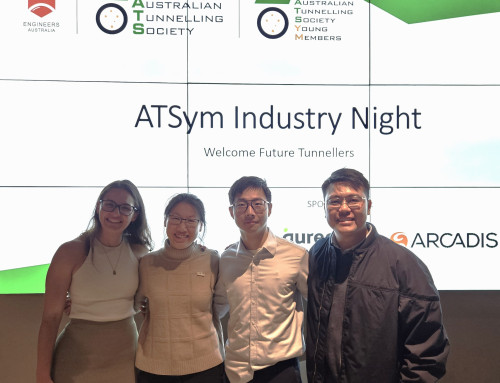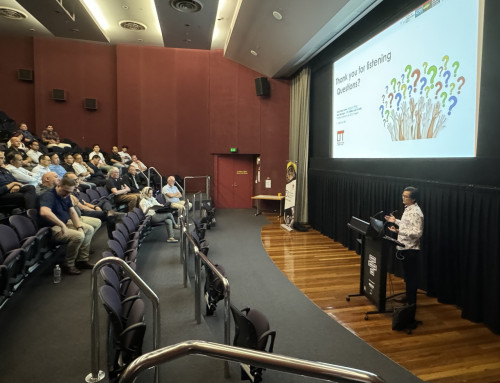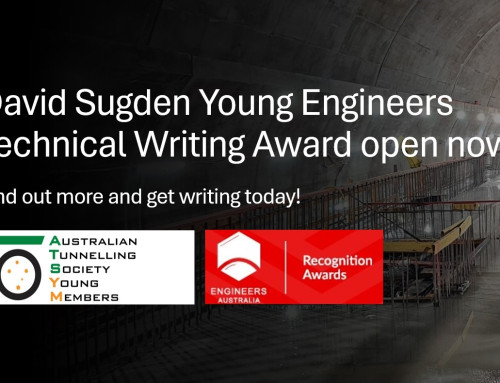With the shotcrete industry experiencing unprecedented growth and demand in Australia, particularly in civil tunnels, this two-day event was designed to appeal to beginners and experts alike.
The atmosphere was buzzing at the Novotel Sydney Central Hotel on November 16-17 as many of the nation’s foremost shotcrete experts got together to speak, one after the other, on topics of relevance to the over 120 attendees.
As an essential component of most underground space developments, recent years have seen a large increase in the amount of shotcrete used for civil infrastructure projects. The volume of work and demands for sustainability and price control have presented new challenges for suppliers, contractors, and specifiers involved with this material. The evolution of shotcrete technology, plus the large number of new people in the industry, has heightened the need for an update on products, processes, and methods related to shotcrete application. These are just some of the education gaps this workshop sought to fill.
According to Stefan Bernard, Committee Chair of the Australian Shotcrete Society (AuSS), day one focused almost exclusively on introducing the essentials of shotcrete technology for all applications in Australia with the intention to educate those people who are really new to the industry.
“We had experts presenting 30-minute lectures on the basics of shotcrete including things like mix design, admixtures and activators, fibres and reinforcement, testing and QA/QC, certification, equipment, and surface finishes,” he says.
“In addition, I placed the profession in context by presenting a brief history of shotcrete in Australia.”
The second day focused on more advanced aspects of shotcrete relevant to civil tunnels and infra-structure. “Day two was about boosting the knowledge of the more experienced people in the industry. It still held interest and was applicable to the newcomers, but it delved deeply into several key issues,” explains Stefan.
These eight lectures included deep dives into shotcrete specification, sustainability, changes to supply, shrinkage cracks, lining analysis methods, and fire behaviour; plus, the President of the International Tunnelling Association, Professor Arnold Dix, presented on the important topic of liability issues related to shotcrete.
“One of the most pertinent issues we explored was waterproofing,” explains Stefan. “As many tunnelling professionals know, several of the recently constructed tunnels in Sydney, Melbourne and Brisbane are experiencing problems of water leakage. That’s why we devoted two sessions specifically to this topic.”
Stefan was extremely happy with the turn out saying they hadn’t had this many industry professionals together in one place since the last shotcrete conference in 2010. He was also gratified to see the wide range of people who attended.
“There was a great mix of people, including consultants, contractors, owners and those who represent owners, nozzle sprayers and sponsors. It was also great to see so many engineers from Transurban and from the new tunnel division of Transport for New South Wales. This is the best turnout we’ve had among those groups ever.”
According to Stefan, one of the most interesting and exciting aspects of the shotcrete industry in Australia, and why it is so successful, is the lack of regulation around shotcrete use compared to other countries.
“I have travelled widely and this lack of regulation is quite unique to Australia. Even though we have invented very little in shotcrete, we’ve certainly made better use of shotcrete innovations than just about anywhere else,” he says.
“Australia has an interesting environment when it comes to shotcrete, particularly in the mining industry where we are allowed to try new things and if it works, it gets adopted, and if it doesn’t, that’s fine, we’ll try something else. I think that’s one of the reasons why the Australian mining industry is one of the most productive in the world, despite having exceptionally high paid workers.”
Overall, with its vibrant lectures and Q&A sessions, great food and networking opportunities, and interesting virtual reality demonstrations during the breaks, Stefan and others on the AuSS Committee credit the workshop as being a great success.
“With this many attendees just from Sydney, I think there is definitely scope to create similar workshops in Melbourne and Brisbane in the months to come,” says Stefan.
